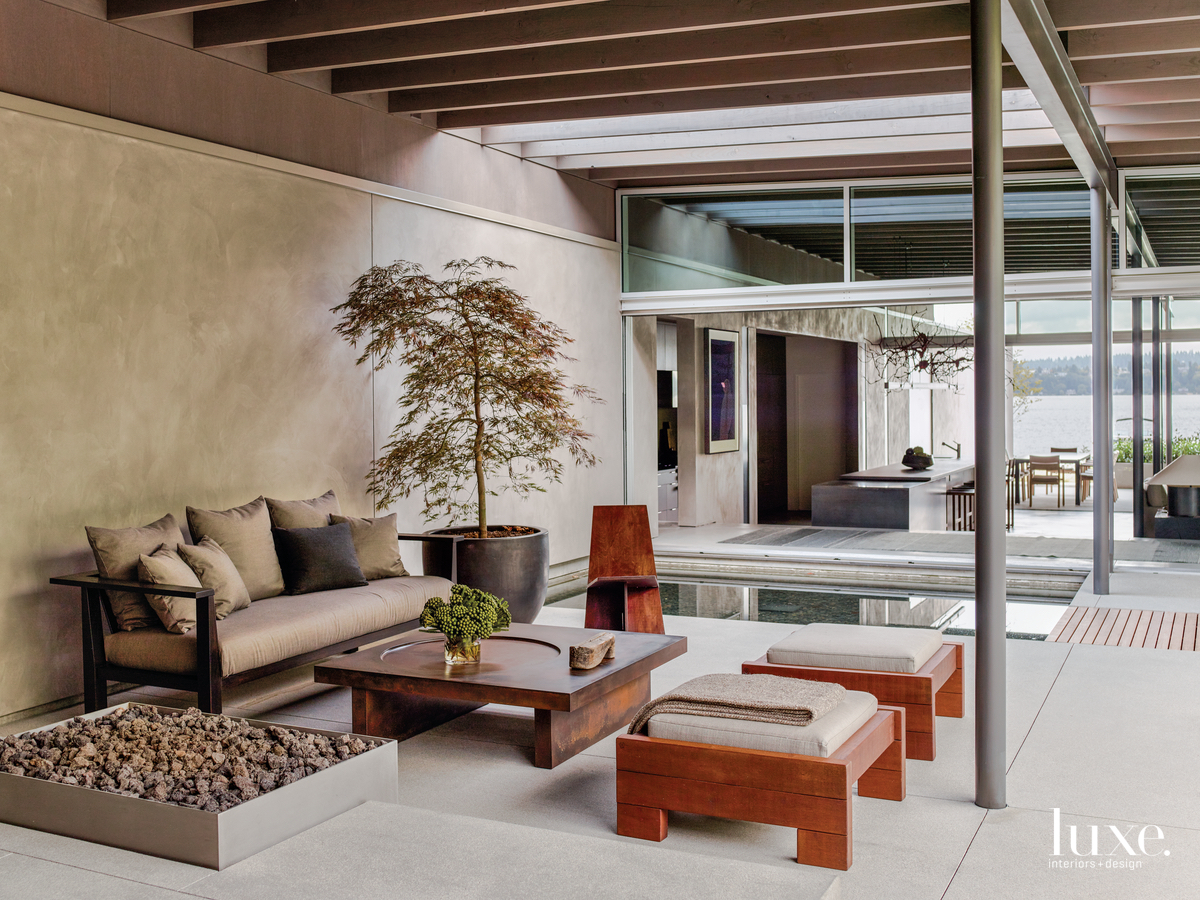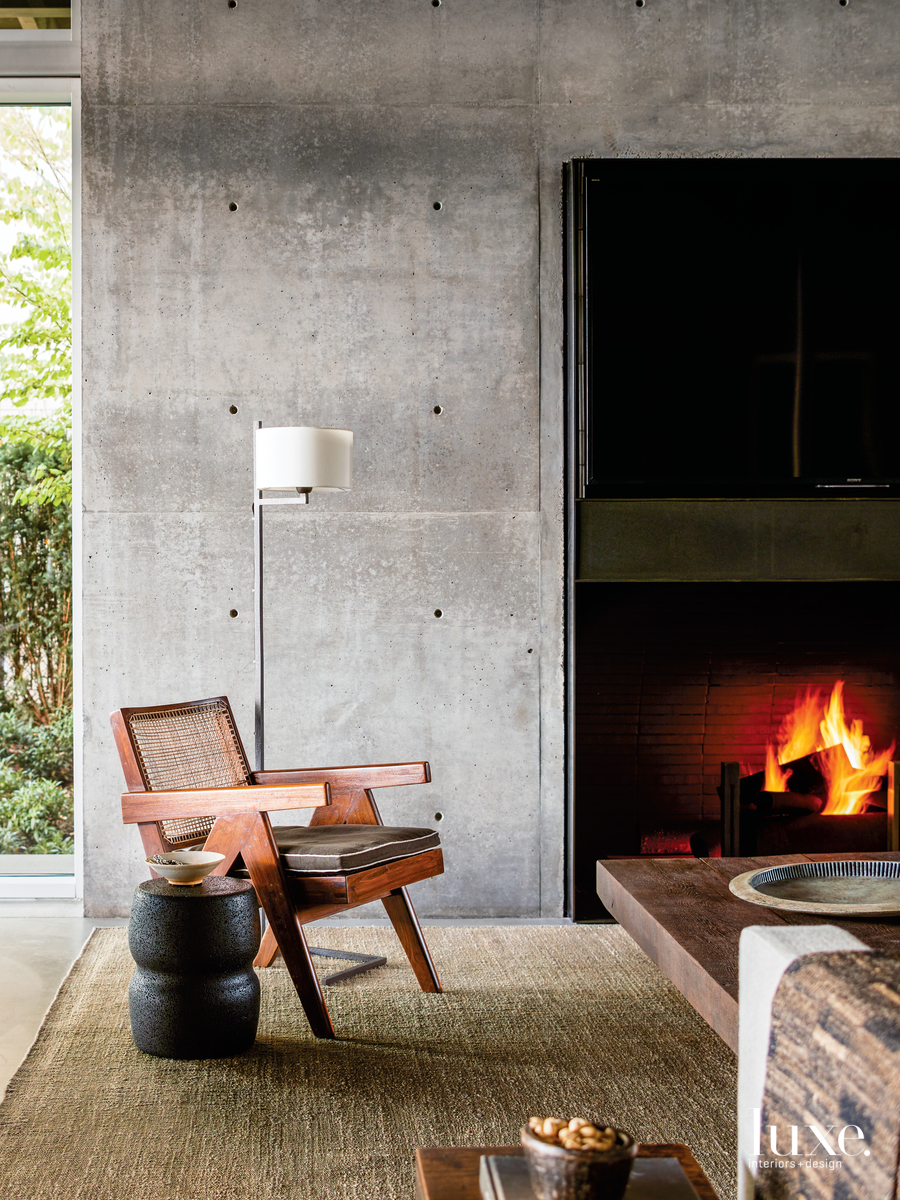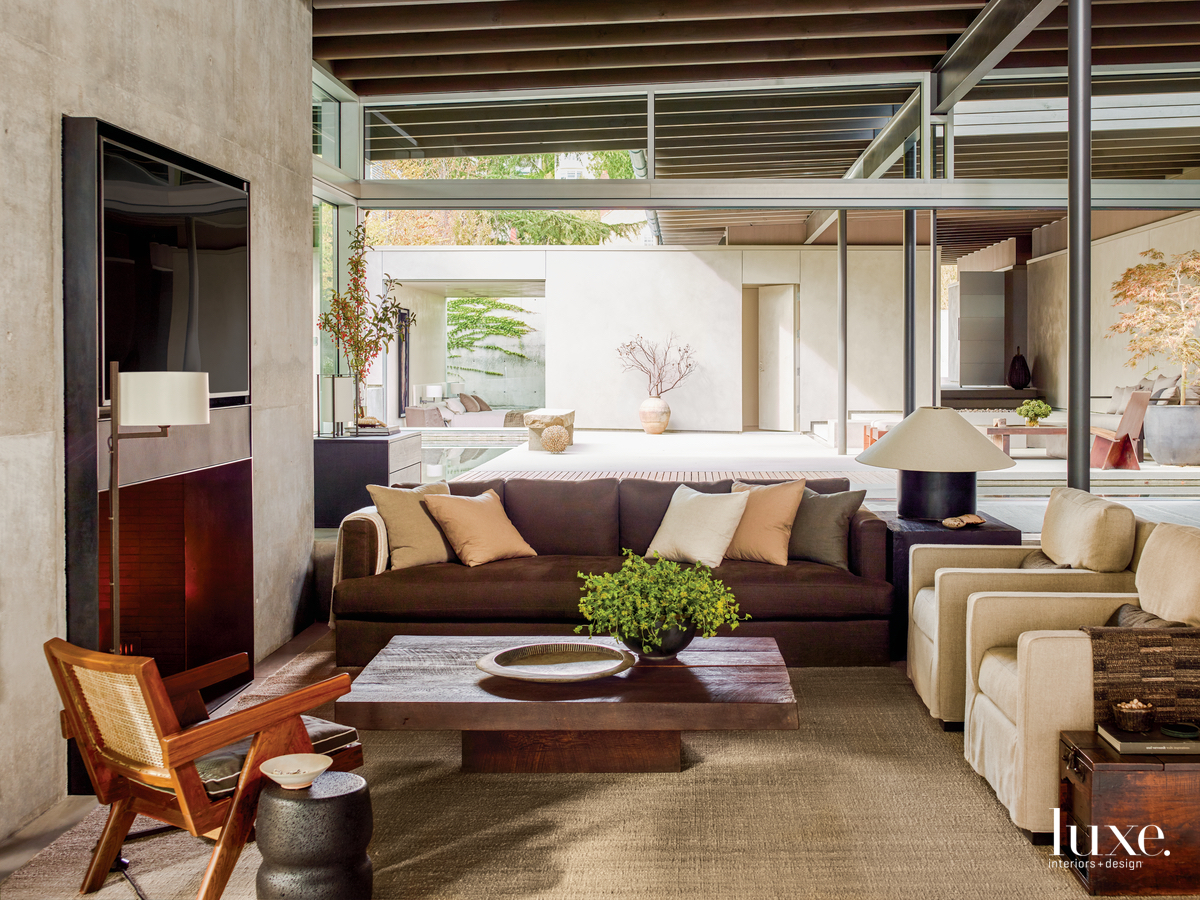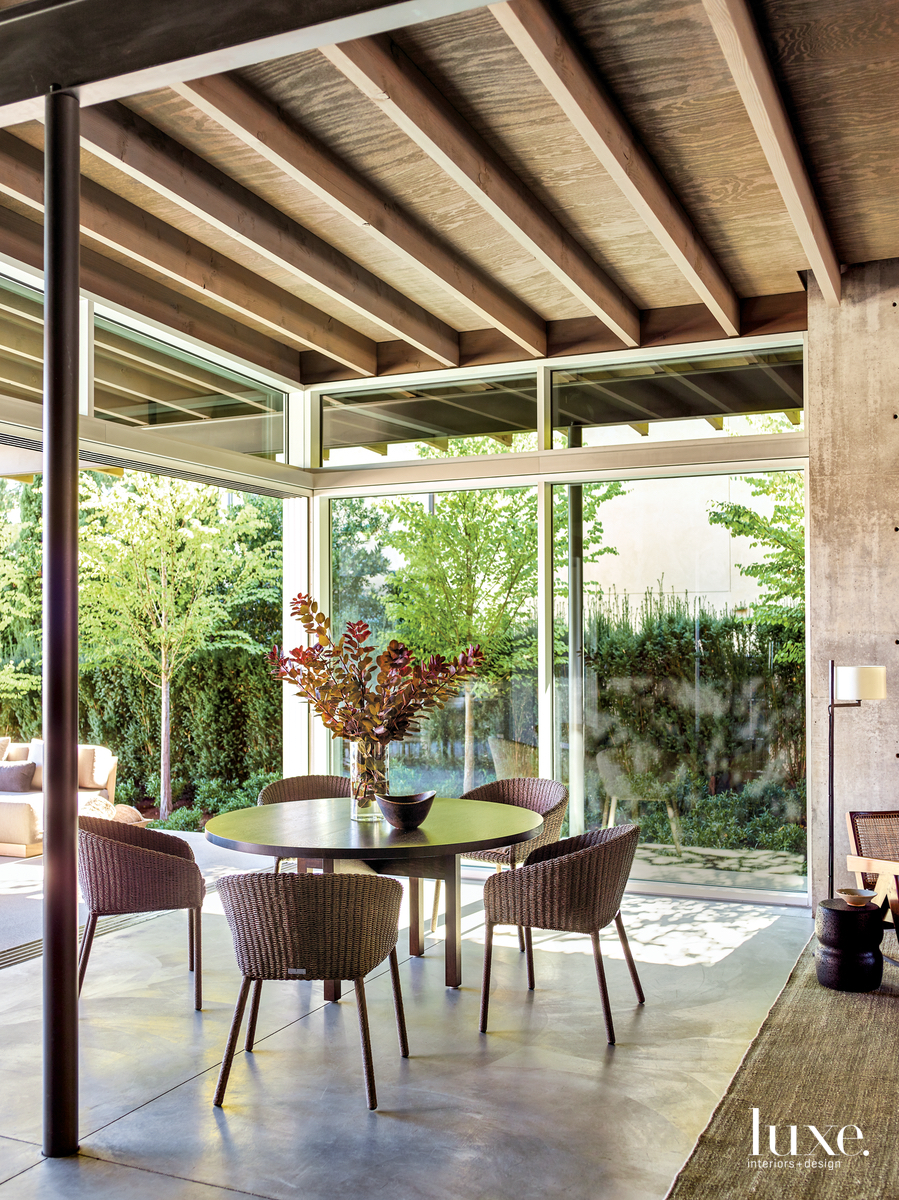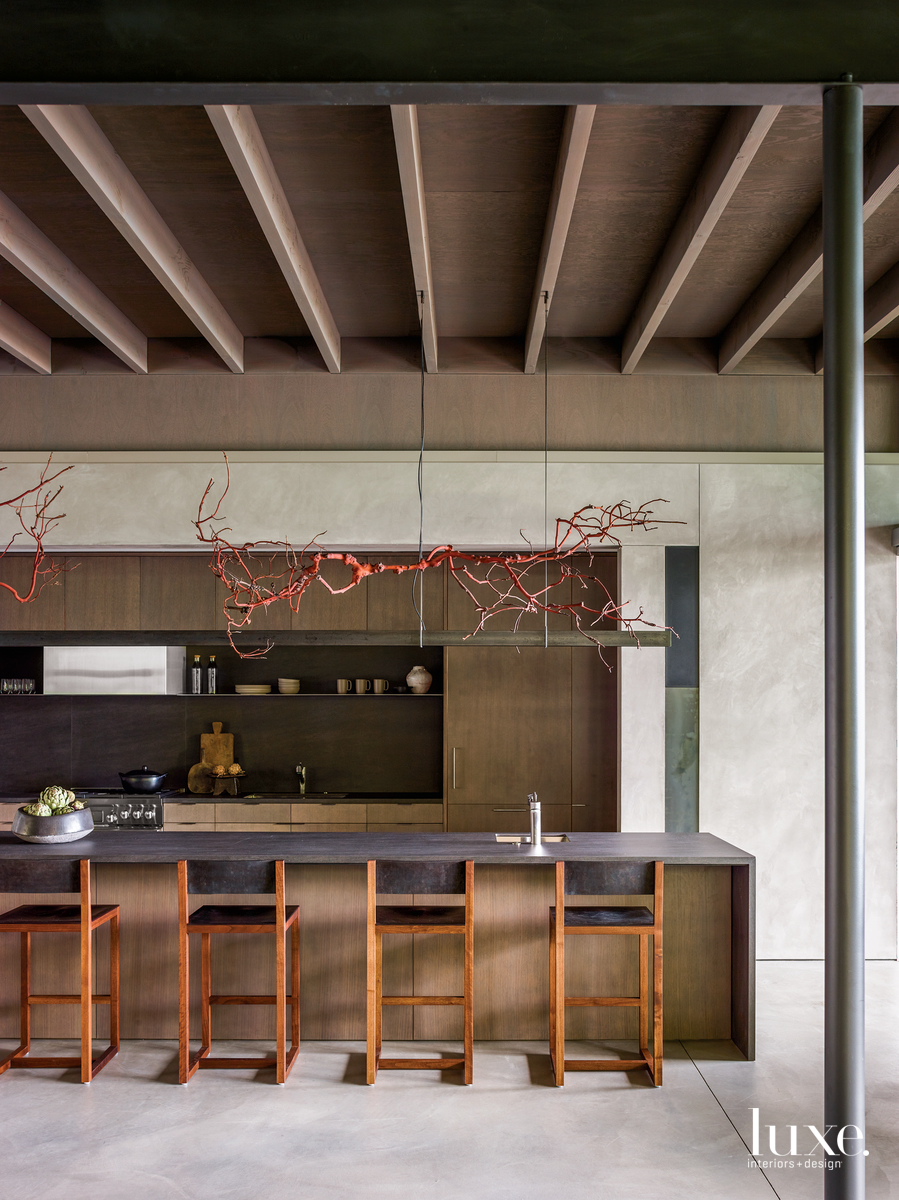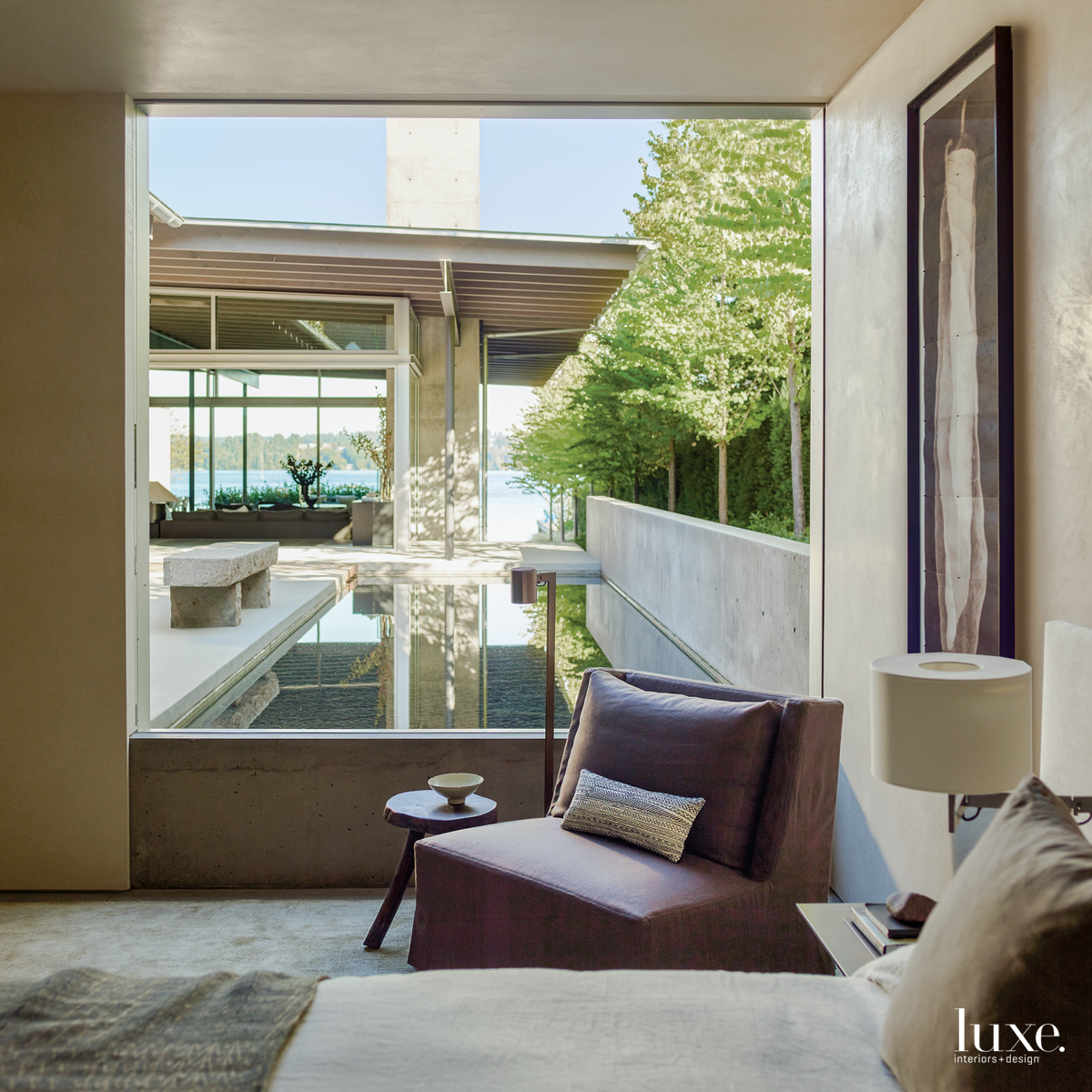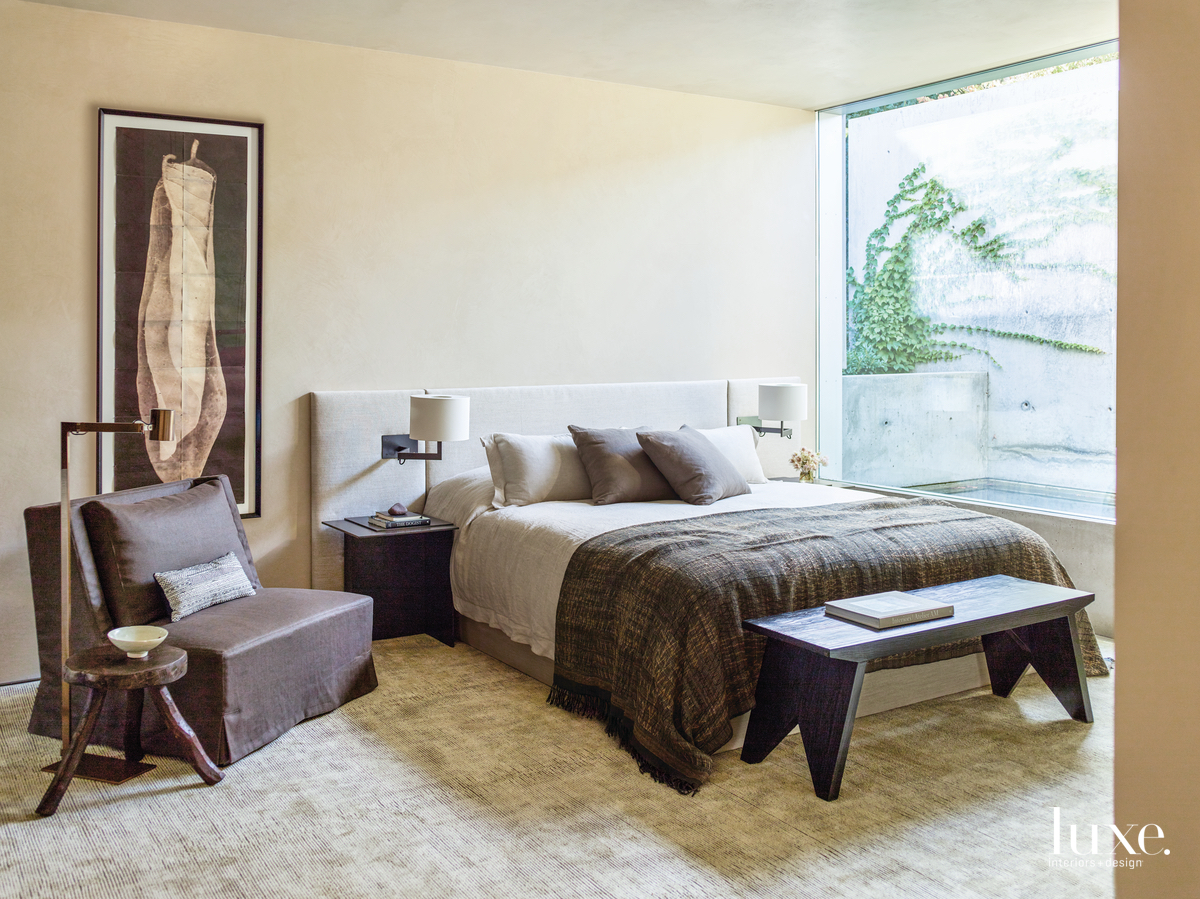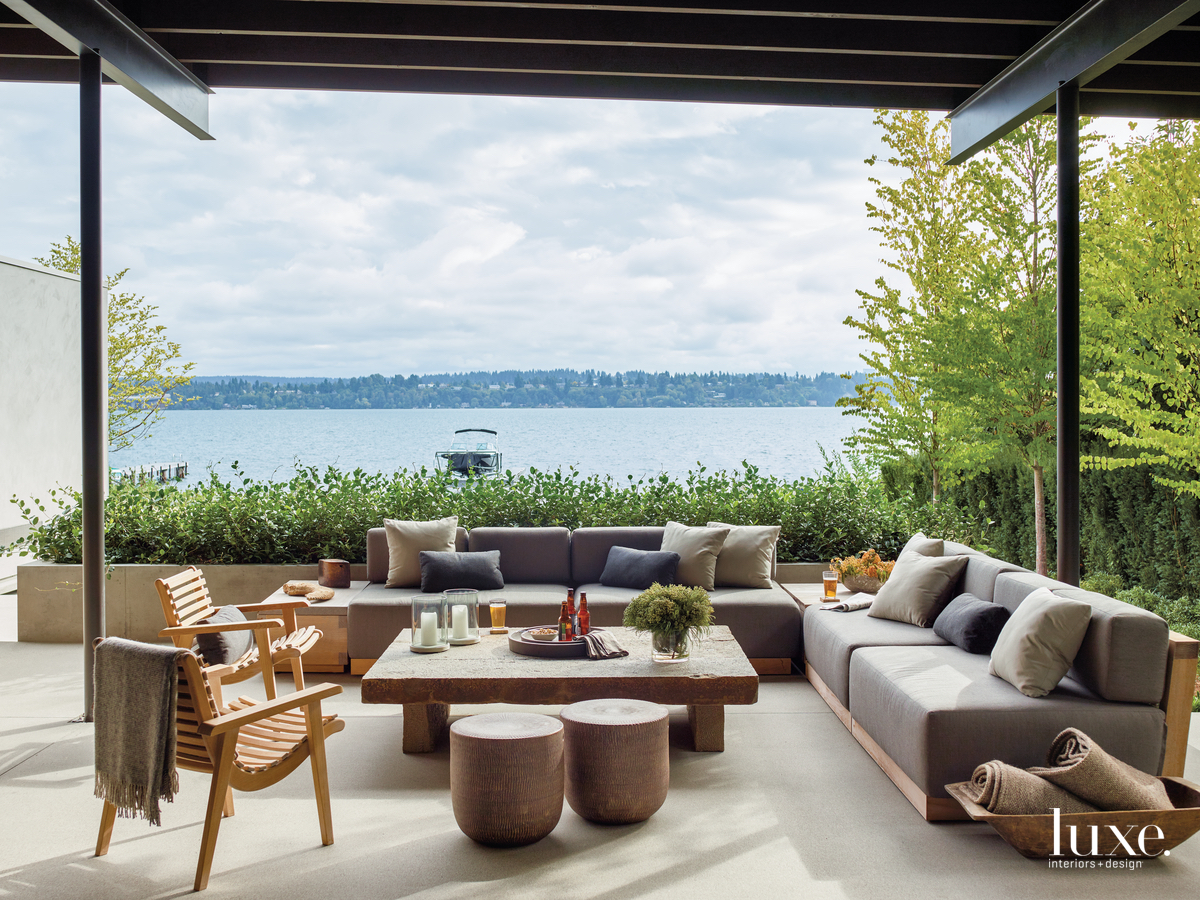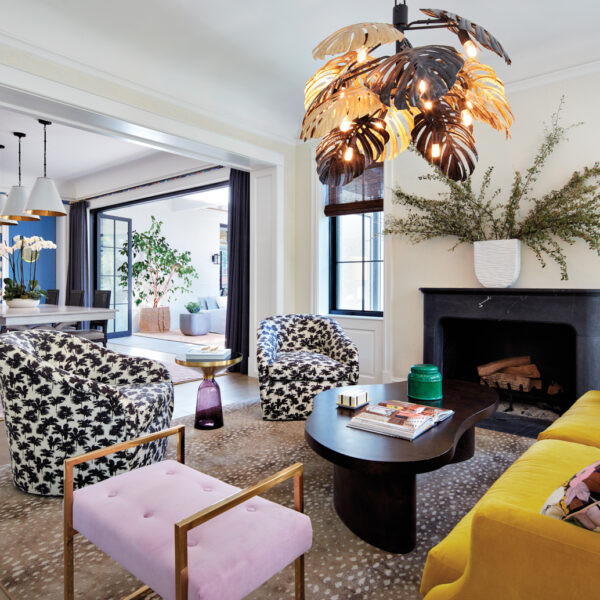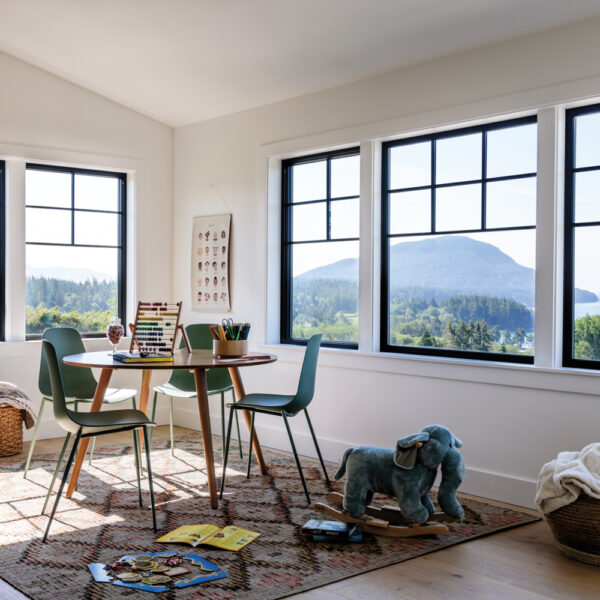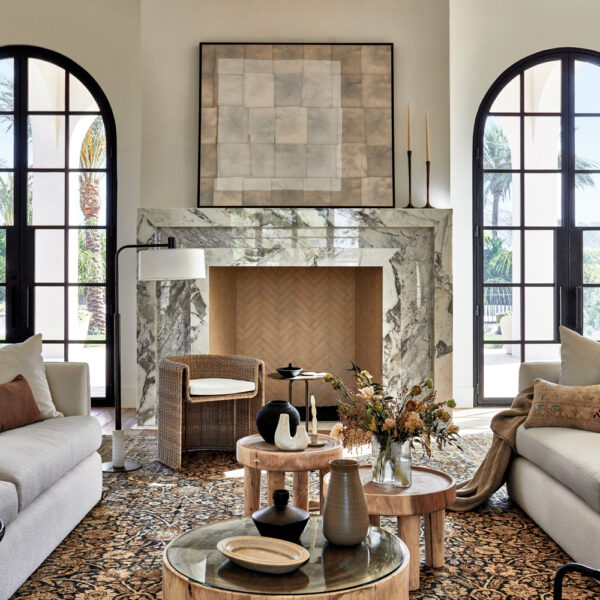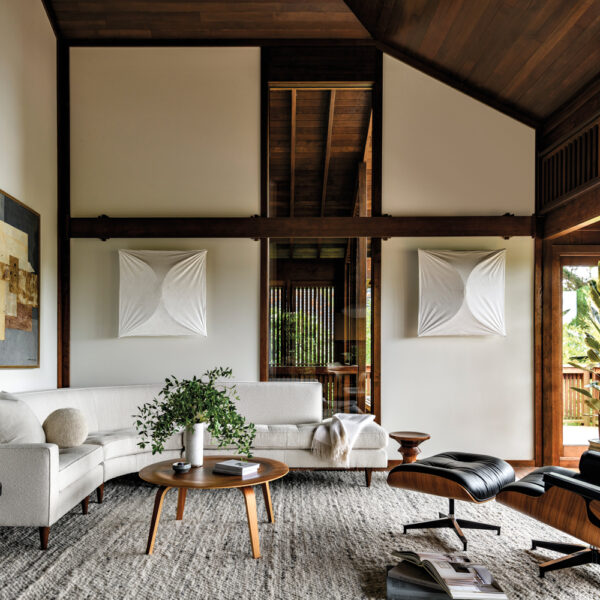Most architects don’t aim to confuse their clients and most clients don’t ask to be confused. But in truth, a tiny amount of architectural dislocation–thoughtfully conceived and strategically placed–can be a wonderful, even magical, thing.
Take the manner in which George Suyama, his partners Ric Peterson and Chris Haddad, and their associate Davis Hammer deconstructed the concept of an entrance for a family’s Lake Washington retreat. Many architects speak of their desire to design homes that blur the line between inside and outside. But for these architects, that meant more than just incorporating sliding-glass doors that opened to a patio. It meant, Suyama says, “not creating a sense of entry at the front door”–in other words, not formally announcing the separation of the structure from its environment with a stark symbol of division. Instead, those entering the home pass through a gate into a series of interstitial spaces that make it pleasantly “unclear as to whether you’re inside or outside,” he notes. Regardless of your actual status, the architect says, once you pass through that gate, “you feel like you’re in the house already.”
If entering the non-entrance of this home sounds almost like the beginning of a journey, well, that’s the idea. Suyama and the team initially imagined the residence in perambulatory terms: as a comfortably sheltered progression from street level down to the scenic waterfront reward. Yet instead of concealing the ultimate prize from view until the very end, Suyama says, “what we wanted to do was bring a sense of the waterfront into and through the house; to celebrate the topography, to increase the sense of travel.” This was achieved, in part, by having the floor plan fall a few inches–in tiers, and every so often–to match the subtle descent of the grade. Given the narrow, rectangular footprint of the house, to walk through the space is, necessarily, to walk to the water.
Along the way, there are plenty of places to stop and reflect. Designer Kylee Shintaffer worked to create what she calls “resting moments” throughout the house–spots where furnishings, materials, colors and the view combine to maximize comfort and serenity, two words that crop up frequently when she talks about the design. “We picked things that had an organic quality to them,” she says, “whether it’s the wood or the plaster that we selected early on when we were working with the architects on the structure; the fabrics; or the furnishings.”
Asked to encapsulate the overall design in a few words, Shintaffer volunteers the phrase “one with the earth.” It’s an apt description: Natural tones and soothing, hand-wrought textures throughout are meant to connote earth, water and the point where they meet. The designer’s choices allow the interior and exterior to, in her words, “embrace both the cold, cloudy days that we get so often in the winter, as well as the brighter days that lay just beyond.”
Shintaffer cites a pair of courtyards–one near the front of the house, the other at the rear–as her attempt to fulfill, with furnishings, the architects’ goal of dissolving boundaries. Even though they’re technically a pair of patios, she says, “we approached the selection of furniture in the same way that we would approach it indoors. It imparts more complexity. We were really able to give each one a sense of being a ‘room’–it’s just that these rooms happen to be outdoors.”
Carrying out the architects’ vision of a house that literally descends to the waterline meant rethinking the idea of a foundation, according to general contractor Chris Huggins. The job required “over 30 slab elevations and countless alignments,” he says. But “in a building like this, the structure is the finish. We had to allow the design and the details to dictate the construction sequences and assembly methods.”
Landscape architect Anne James–who worked on the project with recently retired landscape architect Rich Haag, before completing the work under her own shingle–knew her task would be challenging when she first spied the lot, a thin strip of land with houses immediately abutting it to the north and south. Nevertheless, she created beautiful living privacy fences out of yews, blueberry hedges and katsura trees. She also restored the shoreline to “a more natural, sh-friendly condition” by replacing the lawn leading down to it and the stone-and-concrete bulkhead with a gently sloping sand beach. To improve salmon habitat, she says: “We installed spawning gravel along the water’s edge, and we also placed an open grating on the dock, which lets light filter down into the water below.”
All paths in and around the house lead to the shore; all decisions were made with water in mind. Once those facts are understood, any initial confusion about what’s indoors or what’s outdoors is quickly, calmly resolved. When Shintaffer describes what’s special about this project, she might well be speaking for everyone who had anything to do with the home–including its residents or their visitors. “You’re interacting with water throughout,” she says. “You just feel this connectedness to the lake at every turn. You really know where you are.”

